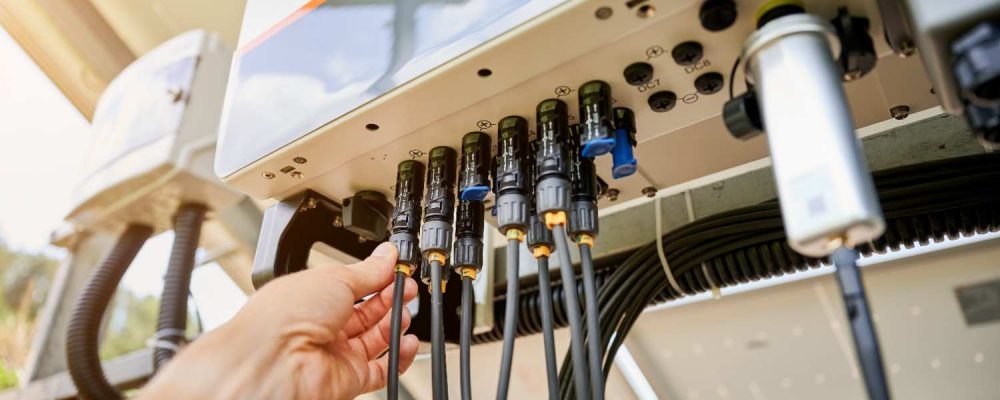Summary : Audio video conferencing solutions are essential for hybrid workspaces, enabling seamless communication between remote and in-office teams. High-quality AV systems enhance collaboration, real-time engagement, and team cohesion, while integrating with popular platforms like Zoom and Microsoft Teams. Proper installation, scalable technology, HD cameras, noise-cancelling audio, and cloud-based software ensure productivity and professional meeting experiences. Network Drops provides expert AV solutions in NJ, helping businesses optimize hybrid collaboration and maintain efficient, connected work environments.

Hybrid workspaces have become increasingly popular as businesses adopt flexible work models that combine in-office and remote work. This shift has created a need for reliable audio video conferencing solutions that enable seamless communication and collaboration among distributed teams. Effective AV solutions ensure that all team members, whether at home or in the office, can participate in meetings without disruptions. These technologies bridge the communication gap and foster an environment where everyone feels equally involved. Providing high-quality audio and video, these systems help businesses maintain productivity, enhance team cohesion, and create a professional meeting experience for internal and external stakeholders. As a result, investing in robust audio video conferencing solutions is essential for any organization looking to succeed in a hybrid work environment.
The hybrid work model gained momentum during the pandemic and has since become a preferred approach for many businesses. This model allows companies to combine the benefits of both remote and in-office work, providing employees with greater flexibility in managing their work-life balance.
Companies are embracing hybrid workspaces to boost employee satisfaction and retention, as today’s workforce highly values the option to work from home a few days a week. This approach reduces the need for large office spaces and enables businesses to attract top talent from various locations.
However, hybrid workspaces come with their own set of challenges. Communication gaps and maintaining team cohesion are common issues, as remote employees may feel isolated or disconnected from in-office colleagues. Without effective communication tools, ensuring everyone remains aligned and engaged can be difficult.
Investing in high-quality audio video conferencing solutions is essential for overcoming these challenges and fostering a unified team environment.
Effective collaboration is crucial in a hybrid workspace, and implementing robust audio video conferencing solutions is the key to achieving this. From connecting remote employees with in-office teams to facilitating interactive meetings, these solutions enhance communication and collaboration across all levels of an organization. Let’s explore how AV systems make a difference.
One of the main benefits of audio video conferencing solutions is that they allow seamless communication between employees, regardless of location. High-quality video and clear audio eliminate common barriers, such as lag and poor sound quality, which can disrupt meetings. With features like screen sharing, virtual whiteboards, and simultaneous file collaboration, AV systems replicate the experience of in-person meetings, enabling employees to communicate ideas and work on projects as if they were in the same room.
Audio video conferencing solutions promote real-time engagement by allowing team members to interact more naturally. Tools like live polling, breakout rooms, and interactive Q&A sessions keep participants involved throughout the meeting. This active engagement is particularly important in hybrid work environments, where remote employees might otherwise feel like passive observers. With real-time video and audio, everyone can see and hear each other clearly, making it easier to interpret non-verbal cues and respond instantly.
Building strong relationships in a hybrid workspace can be challenging, but AV solutions help foster a sense of teamwork. They enable face-to-face interactions, which are vital for team-building and trust. Virtual brainstorming sessions, project discussions, and team catch-ups become more productive when participants can communicate visually and verbally. These solutions also allow hybrid teams to hold impromptu meetings, making it easier to maintain regular contact and a collaborative spirit.

Choosing the right audio video conferencing solutions is just the first step. Proper installation is key to ensuring that these systems perform optimally and provide a seamless user experience. Follow these best practices to get the most out of your AV setup.
Before installing an AV system, it’s essential to assess the workspace thoroughly. Consider the room size, acoustics, and lighting conditions, as these factors impact the overall performance of your audio video conferencing solutions. Additional microphones and speakers may be necessary for large conference rooms to ensure even coverage. Smaller spaces might only require a simple setup, but proper camera placement is still crucial to ensure everyone is visible. A detailed assessment will help determine the specific equipment and layout that best suits each room.
When choosing AV equipment, look for scalable solutions that can adapt to your business’s growing needs. Hybrid workspaces often change over time, with companies adding new rooms or modifying layouts. Scalable audio video conferencing solutions allow you to expand your setup without a complete overhaul. Opt for systems that support easy upgrades, such as adding more cameras, microphones, or integration features. This flexibility ensures that your investment remains valuable as your business evolves.
To maximize efficiency, your audio video conferencing solutions should integrate seamlessly with existing collaboration tools. Popular platforms like Microsoft Teams, Zoom, and Slack have unique compatibility requirements, so choosing equipment that supports these platforms is critical. Integration allows team members to schedule meetings, share content, and collaborate without switching between multiple interfaces. This enhances the user experience and minimizes the chances of technical difficulties during meetings. Additionally, integrated systems can be managed centrally, making it easier for IT teams to monitor and troubleshoot issues.
Creating an effective video conferencing environment requires a combination of advanced technologies to ensure clear communication and seamless collaboration. Below are the key technologies that significantly impact the quality of your audio video conferencing solutions.
High-definition cameras are essential for capturing clear, sharp video during meetings. An HD camera ensures that all participants, whether in the room or remote, have a clear view of the speaker and other meeting attendees. Modern HD cameras have features like automatic framing, wide-angle lenses, and low-light performance to adapt to various room sizes and conditions. Choosing the right camera setup helps create a professional atmosphere and reduces visual distractions during hybrid meetings.
Clear audio is just as crucial as high-quality video. Noise-cancelling microphones and speakers filter out background noise, ensuring participants can communicate without interruptions. Look for microphones with beamforming technology, which focuses on the speaker’s voice while minimizing ambient noise. On the other hand, high-quality speakers provide clear audio output, making it easy for participants to understand each other, even in larger rooms. Incorporating these components helps eliminate miscommunication and enhances the overall meeting experience.
Smart displays and interactive screens are designed to facilitate visual collaboration. These screens allow participants to share presentations, annotate documents, and brainstorm ideas in real-time. Features like touch functionality, digital whiteboarding, and multi-user interaction make them ideal for hybrid meetings. Interactive displays create a more engaging experience by enabling team members to participate actively, whether they are in the office or joining remotely.
The backbone of any audio video conferencing solution is the software that powers it. Cloud-based conferencing platforms such as Zoom, Microsoft Teams, and Webex enable users to connect effortlessly from any device, regardless of location. Cloud solutions offer features like meeting recording, virtual backgrounds, chat integration, and file sharing. They also provide greater flexibility by allowing participants to join from mobile phones, desktops, or dedicated room systems. The scalability and reliability of cloud-based solutions make them a must-have for modern hybrid workspaces.

Creating a productive hybrid workspace starts with having the right AV technology. At Network Drops, we provide professional audio video conferencing solutions tailored to your unique needs. Our experts will help you select, install, and optimize your conferencing equipment to ensure seamless communication and collaboration. Whether you need to upgrade your existing setup or design a new system from the ground up, we have you covered.
Contact us today to discuss your requirements and discover how our AV solutions can transform your meetings into highly effective, engaging, and professional experiences.
AV solutions enable seamless communication between remote and in-office teams, ensuring everyone can participate equally, regardless of location. This leads to more productive meetings and better collaboration.
Consider your office size, room layout, and specific requirements such as camera coverage, audio clarity, and integration with existing collaboration tools. Consult a professional to assess your needs and recommend the best solutions.
Key technologies include HD video cameras, noise-cancelling microphones, high-quality speakers, smart displays, and reliable cloud-based conferencing software.
AV solutions eliminate communication barriers, provide clear audio and video, and enable real-time interaction, making meetings more engaging and efficient.
Challenges include poor acoustics, improper camera placement, and compatibility issues with existing systems. Avoid these by conducting a thorough site assessment and working with experienced AV professionals for installation.
"*" indicates required fields
Scott Fcasni is the driving force behind Shock I.T. Support’s commercial datacomm cabling division, delivering expert solutions that power reliable, high-performance network infrastructures. With extensive experience in structured cabling and a commitment to precision, Scott ensures that every project—whether for small businesses or large enterprises—meets the highest standards of quality and scalability.